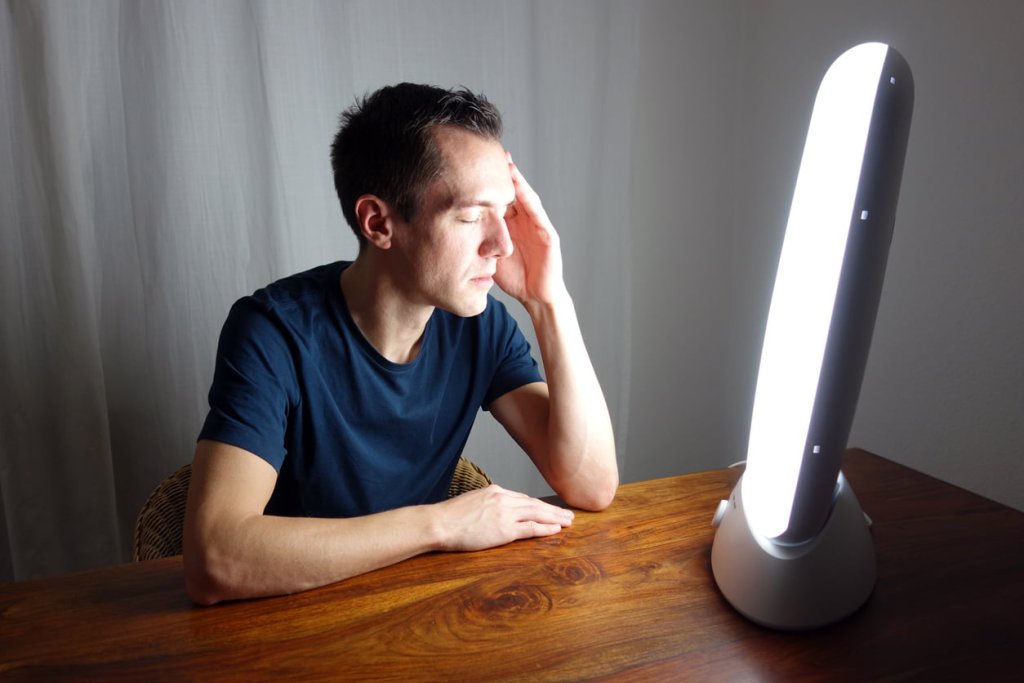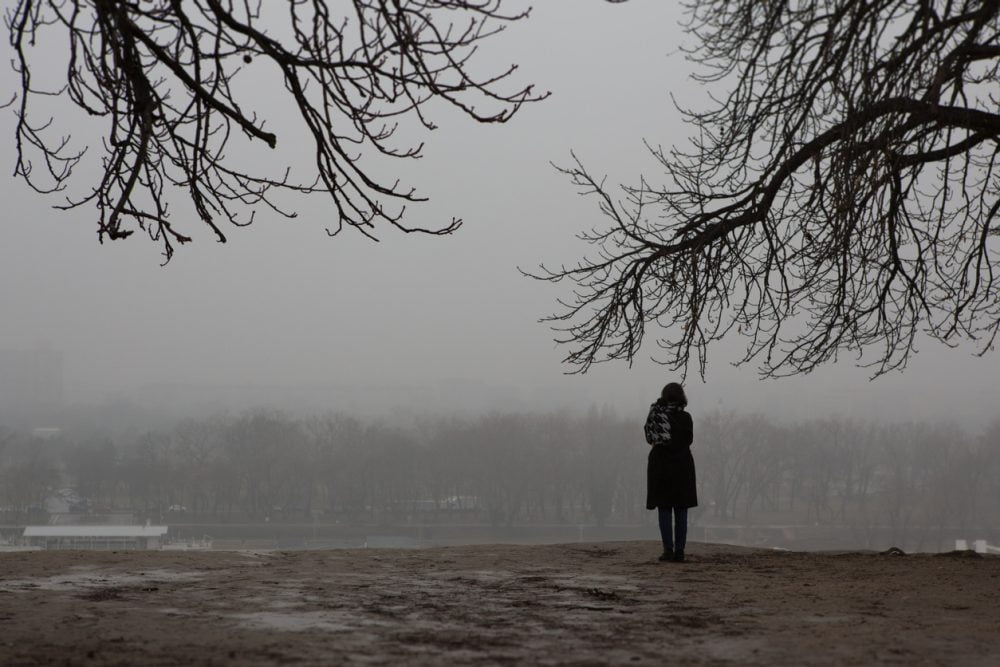In this blog for our Evidence for Everyday Health Choices series, Sarah Chapman looks at the latest Cochrane evidenceCochrane Reviews are systematic reviews. In systematic reviews we search for and summarize studies that answer a specific research question (e.g. is paracetamol effective and safe for treating back pain?). The studies are identified, assessed, and summarized by using a systematic and predefined approach. They inform recommendations for healthcare and research. on approaches to preventing seasonal affective disorder (SAD).
Page last updated: 14 August 2019. Page last reviewed 05 April 2023.
The clocks have gone forward and I’m grateful to be stepping out into daylight when I leave work. The lengthening days and signs of spring are cheering for many of us who get ‘a bit fed up’ with winter and those short hours of daylight. For others, it’s more serious. I’m talking about those who suffer from seasonal affective disorder (SAD), a seasonal pattern of recurrent major depressive episodes commonly occurring in autumn or winter and improving in spring.
In the depths of winter, I found myself looking at light boxes, wondering if they might help friend who thought she might have SAD. I didn’t get very far, as I read that people taking anti-depressant medication should check with their GP, so suggested she ask her’s. But what I did read gave the impression that light therapy (exposure to artificial light in various ways) is helpful and that there’s a light box for every budget and preference.
There are plenty of articles to help you choose the best SAD lamps, with the sort of information we might want when buying any gadget – ease of use, size, special features and so on. But before we get carried away with the possibilities of six wake-up melodies or 16 million colours for your bedroom lighting (I kid you not), we’d do well to ask what’s the evidence for the benefits and harms of light therapy for preventing SAD? A Cochrane team asked this question, updating their Cochrane Review on light therapy for preventing SAD in March 2019, so let’s see what they found.

What’s the evidence on light therapy?
The team looked extensively for published and unpublished studies on any type of light therapy for preventing SAD in adults, on its own or combined with other treatments, compared with no treatmentSomething done with the aim of improving health or relieving suffering. For example, medicines, surgery, psychological and physical therapies, diet and exercise changes., placeboAn intervention that appears to be the same as that which is being assessed but does not have the active component. For example, a placebo could be a tablet made of sugar, compared with a tablet containing a medicine. (a ‘dummy’ treatment) or another treatment such as antidepressants or talking therapies.
The review still includes just one studyAn investigation of a healthcare problem. There are different types of studies used to answer research questions, for example randomised controlled trials or observational studies.. With only 46 people. The study is over 20 years old. How disappointing! The study compared the preventive use of bright white light (2500 lux via visors) or infrared light (0.18 lux via visors) with no light treatment. It sheds no light (sorry!) on whether there is any benefit from these (or any other) light therapies for preventing SAD or on whether they are safe.
Are second-generation antidepressants (SGAs) effective and safe for preventing SAD?
SGAs work through their effects on neurotransmitters in the central nervous system. Only one SGA, bupropion XL (extended-release), is licensed for use in preventing SAD.
The Cochrane Review on SGAs for preventing SAD was also updated in March 2019. There is better evidence on this, from three randomisedRandomization is the process of randomly dividing into groups the people taking part in a trial. One group (the intervention group) will be given the intervention being tested (for example a drug, surgery, or exercise) and compared with a group which does not receive the intervention (the control group). trialsClinical trials are research studies involving people who use healthcare services. They often compare a new or different treatment with the best treatment currently available. This is to test whether the new or different treatment is safe, effective and any better than what is currently used. No matter how promising a new treatment may appear during tests in a laboratory, it must go through clinical trials before its benefits and risks can really be known. with 1100 adults with a history of SAD.
They found moderate-certaintyThe certainty (or quality) of evidence is the extent to which we can be confident that what the research tells us about a particular treatment effect is likely to be accurate. Concerns about factors such as bias can reduce the certainty of the evidence. Evidence may be of high certainty; moderate certainty; low certainty or very-low certainty. Cochrane has adopted the GRADE approach (Grading of Recommendations Assessment, Development and Evaluation) for assessing certainty (or quality) of evidence. Find out more here: https://training.cochrane.org/grade-approach evidence that bupropion XL is probably effective for preventing depressive episodes in adults prone to SAD. However, it probably increases the riskA way of expressing the chance of an event taking place, expressed as the number of events divided by the total number of observations or people. It can be stated as ‘the chance of falling were one in four’ (1/4 = 25%). This measure is good no matter the incidence of events i.e. common or infrequent. of headaches and may increase the risk of insomnia and nausea, compared with placebo.
As with any treatment, the balance of benefits and harms needs to be considered. The review authors conclude that even among people at high risk of SAD “three out of four people will not benefit from preventive treatment with bupropion XL and will be at risk for harm.”

Other preventive approaches
There are two other Cochrane ReviewsCochrane Reviews are systematic reviews. In systematic reviews we search for and summarize studies that answer a specific research question (e.g. is paracetamol effective and safe for treating back pain?). The studies are identified, assessed, and summarized by using a systematic and predefined approach. They inform recommendations for healthcare and research. on preventing SAD, one on the use of melatonin and agomelatine and the other on psychological therapies. The first of these was updated in June 2019 and contains only one small study (there were none to include previously). The other review had no studies until it was updated in May 2019, also with just one small study. These do not allow for any conclusions to be drawn about the benefits and harms of these interventions for preventing SAD.
A lightbulb moment?
My lightbulb moment was learning that so little is known about how to prevent SAD and in particular that light therapy, which seems to be popular, has no basis in robust evidence as a preventive therapy for SAD. I am also surprised that this isn’t made clear in the things most people will find when searching the internet. I don’t just mean on ‘top 10 gadget’ lists or commercial sites, but also on non-commercial health sites where we might expect (and hope) to find evidence-based information.
Ideally, treatment choices should be based on the best available evidence (sometimes that means knowing that the evidence is lacking!), clinical judgement and the patient’s preferences and values. These Cochrane Reviews can help with the first part. Don’t forget, treatments can harm, and you can read more about this here.
Join in the conversation on Twitter with @SarahChapman30 @CochraneUK @Cochrane_CCMD or leave a comment on the blog.
Sarah Chapman has nothing to disclose.


